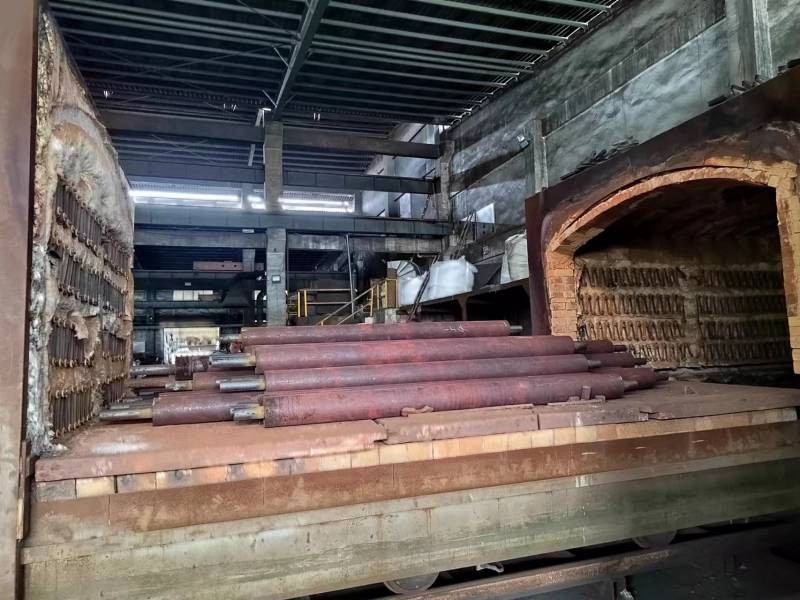我们有两个淬火炉和一个退火炉。对于优质材料的铸件,例如 车轮制动距离, 活塞缸, 框架 等,以确保稳定的机械性能,通常会经过热处理后使用。
热处理是一种热处理工艺,可实现金属铸件材料性能的三个主要改进:
热处理过程首先将金属铸件加热到所需温度,然后以受控方式冷却金属以实现所需的改进。这种加热和冷却过程“锁定”最终的金属微观结构和改进的材料性能。

为什么要进行热处理?
如上所述,热处理用于实现金属铸件的各种所需结果。热处理还可用于降低氢含量、模拟使用条件、恢复机械性能以及减少项目焊接后的应力。这些不同的结果是通过不同的热处理工艺实现的。热处理的首要目标是达到客户的规格要求并符合行业标准。
热处理有哪些类型?
虽然恒昌提供一系列不同的热处理工艺,但其中一些工艺的使用频率更高。
均匀化热处理:
该过程包括将金属铸件在炉中加热至极热温度并保持较长时间,以通过扩散提高化学均匀性。有时采用均质化作为预处理,以使后续热处理更加有效。
正火热处理:
正火是将金属铸件加热到高于转变温度的高温,然后空气冷却回室温。该过程改变了微观结构,以减少铸件内硬度和延展性的变化。温度和时间通常比均质化更低且更短。正火后通常进行回火。回火是将金属铸件加热到相变温度以下的温度,以降低金属的硬度并提高金属的延展性。
淬火热处理和淬火热处理:
使用这种处理可以改善金属铸造机械性能,特别是与增加硬度或耐用性相关。它常用于钢制零件。将金属加热到高温(高于转变温度),然后快速冷却(淬火)。这会导致较软的初始材料将其结构转变为更坚固的结构。
淬火是在初始加热过程后冷却金属铸件。淬火通常在油或水中进行,具体取决于材料和规格要求。回火是淬火和回火过程的最后一步,需要在淬火后进行。它涉及在低温(低于转变温度)下重新加热金属以达到最终规格。回火降低了淬火硬度,恢复延展性,并降低了完全硬化钢的应力。
退火热处理:
退火是将金属加热并保持在高温下,然后在炉中冷却以获得所需的硬度。这通常在“可硬化”铁合金上进行,以降低硬度、增加延展性并改善铸件的机械加工性。该工艺通常用于工具钢、合金钢和马氏体不锈钢,以便在任何硬化和回火操作之前进行快速粗加工。
固溶退火热处理:
固溶退火是将金属加热并保持在高温下,使碳化物和不需要的相等成分进入固溶体,然后快速冷却以将这些成分保持在固溶体中。该工艺提高了合金的机械性能和耐腐蚀性。奥氏体和双相不锈钢通常在固溶退火状态下供应。
消除应力热处理:
消除应力是加热到相对较低的温度并保持足够长的时间,以减少铸件内的残余应力。该过程通常采用受控的加热和冷却速率来最大程度地减少新应力的产生。应力消除通常在粗加工之后、紧公差精加工之前进行。









 IPv6 网络支持
IPv6 网络支持
